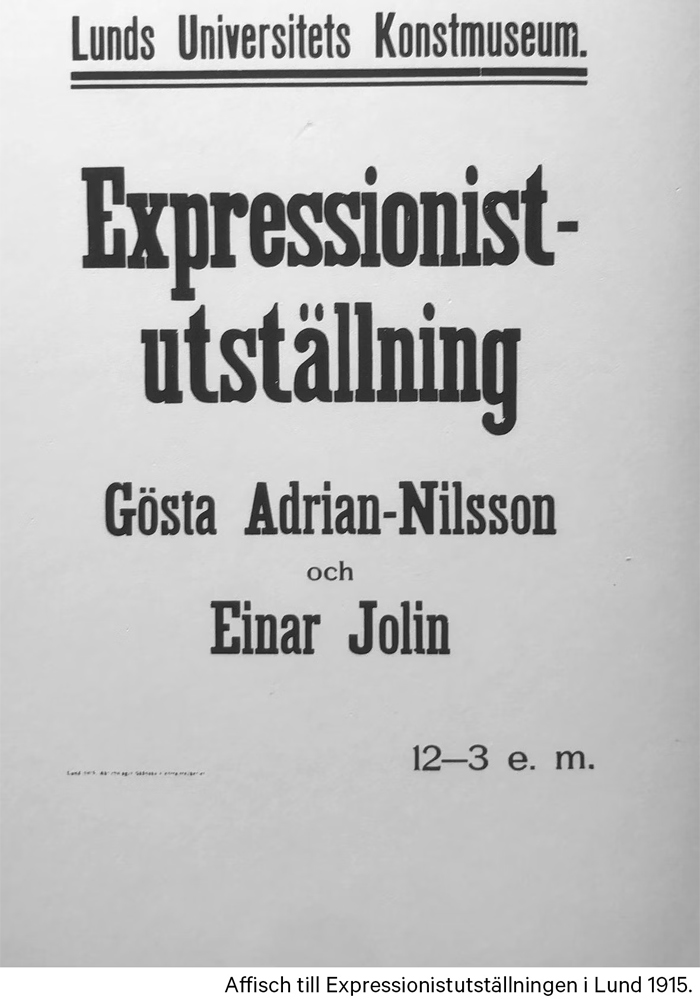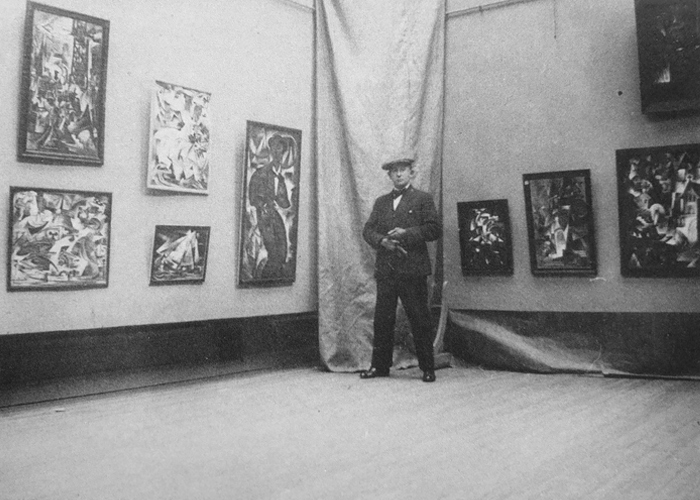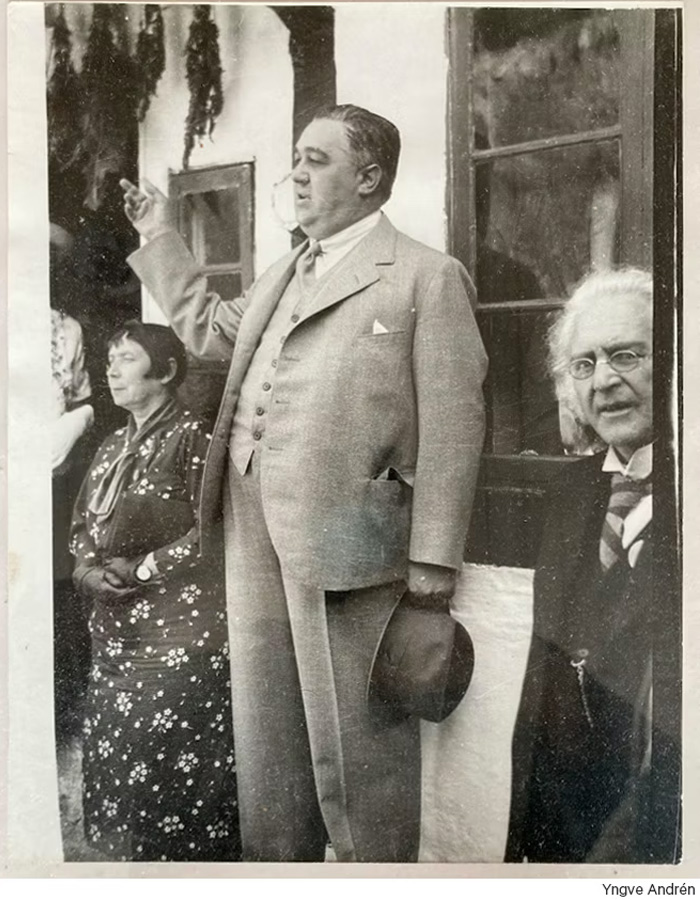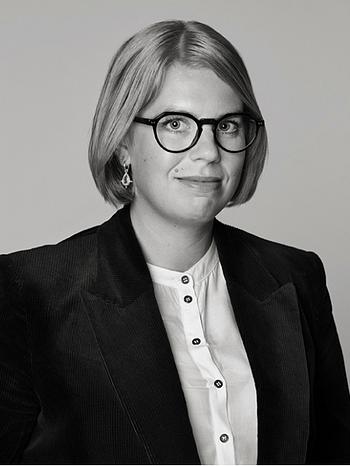Bukowskis presents "Snälltåg/Schnellzug" av Gösta Adrian-Nilsson

Gösta Adrian-Nilsson ”Snälltåg/Schnellzug”, 1915
Text: Jan Torsten Ahlstrand, Art historian, phil. Lic.
”
The express train rushing through the night became a drama in colour of spouting light and passing houses and trees – a symbol of the essence of the times: iron and fire.
Gösta Adrian-Nilsson (GAN) was the only significant Swedish artist of the Swedish avant-garde to study in Berlin rather than Paris before World War I from 1914 to 1918. In Berlin, he met Herwarth Walden, the dynamic head of the magazine and gallery Der Sturm, and was profoundly influenced by the new modernist art exhibited at the gallery. He was most impressed by Der Sturm's exhibition of the European avant-garde at the epoch-making Erster Deutscher Herbstsalon in the autumn of 1913. There, GAN encountered French Cubism, Italian Futurism, and Der Blaue Reiter's Expressionism with Kandinsky and Franz Marc as the leading names. GAN's period of poverty in Berlin ended happily in the summer of 1914 in Cologne, where he had been employed as a "künstlerischer Erklärer," a kind of supervisor, at architect Bruno Taut's famous Glashaus at the Deutscher Werkbund's major industrial art exhibition. However, his employment ended abruptly when the entire exhibition was closed on August 5 due to the outbreak of war in the beginning of the same month. GAN received a message from Berlin: "Sie können fahren wohin Sie wollen, die Sache ist erledigt" (You can go wherever you want, the matter is settled), as he later wrote in his memoirs.

The journey home was adventurous, but by mid-August 1914, GAN was back in Lund, filled with impressions from Berlin and Cologne. He rented a room on Idrottsgatan in Väster, the new industrial and working-class district in Lund. There, he could study young athletes at the sports field, and he passed the gasometer and a couple of factories on his walks to the railway station in the center. In his small apartment during the two years from 1914 to 1916, he created his revolutionary new Futurist-Cubist style, initially with athletes and smoking locomotives as preferred subjects. In September 1914, he published two articles in the Sunday supplement of the newspaper Arbetet, which can be seen as his new Futurist-inspired manifesto. He envisioned a new type of serious artist who represents the future: "He loves power and light – the rapid movement of life around him. He loves the flight of the airplane as it rises above the earth and cuts through the sun's rays – he loves the singing automobile that flashes over the gleaming asphalt, and the flying, invisible words from the wireless telegraph poles. He loves the beauty of the mighty bridges, bridges of steel and human genius, the threateningly lifted giant cranes that carry loads as heavy as mountains, the electric searchlights that suddenly turn night into dazzling day.”
In October 1915, GAN had his first modernist exhibition at Lund University's Art Museum. The 49-item exhibition included the painting Snälltåg (I), executed in a sparse color scheme of mainly brown, black, gray, white, and yellow. In early January 1916, GAN painted a second version of the speeding train in the dark but now in brighter colors of yellow, red, violet, dark blue, and green. In his diary, GAN referred to the two paintings as Snälltåg I and Snälltåg II, respectively. In the Sydsvenska Dagbladet on October 17, 1915, GAN wrote as a comment on the first version: "The express train rushing through the night became a drama in color of spouting light and passing houses and trees – a symbol of the essence of the times: iron and fire.”

Det blev en äventyrlig hemresa, men i mitten av augusti 1914 var GAN hemma i Lund igen, sprängfylld av intrycken från Berlin och Köln. Han hyrde sig ett rum vid Idrottsgatan på Väster, den nya industri– och arbetare- stadsdelen i Lund. Där kunde han studera atletiska unga idrottsmän på Idrottsplatsen, och där passerade han gasklockan och ett par industrier på sina promenader in till järnvägsstationen i centrum. Under de två åren 1914–1916 skapade han i sin lilla lägenhet sin revolutionerande nya futuristiskt–kubistiska stil, till en början med idrottsmän och rökbolmande lokomotiv som prefererade motiv. I sepember 1914 publicerade han i tidningen Arbetets söndagsbilaga två artiklar, som kan ses som hans nya futuristinspirerade programförklaring. Han ser en ny seriös konst- närstyp, som representerar framtiden, stiga fram: ”Han älskar kraften och ljuset – den hastiga rörelsen i livet omkring sig. Han älskar aeroplanets flykt, när det höjer sig över jorden och genomskär solstrålarna – han älskar den sjungande automobilen, som blixtrar fram över den blänkande asfalten, och de flygande, osynliga orden från den trådlösa telegrafens stativ. Han älskar de väldiga broarnas skönhet, broar av stål och mänskligt geni, de hotfullt lyfta jättekranarna, som bära laster tunga som berg, de elektriska strålkastarna som plötsligen göra natten till bländande dag.”

Gösta Adrian-Nilsson at the Expressionism exhibition in Lund 1915.
Yngve Andrén
Shortly after the end of the First World War, two gentlemen in Tomelilla, Skåne, the hardware merchant Yngve Andrén (b. 1885) and the folk high school teacher Theodor Tufvesson (b. 1884), decided to start an art association and organized a first exhibition in 1922 with the intention of spreading art to the people. A couple of years and a few exhibitions later, they decided to build up a public art collection in Tomelilla in combination with an institutional framework for exhibition activities. Together with the artists Anders Olson and Bror Ljunggren, they formed the Tomelilla Art Collection society. The slogan became Art for the rural people! Together, the four founders traveled around to scout out the new art in Skåne in Yngve's "adventure car," the village's first automobile.
The upcoming exhibitions were to have great significance in highlighting Skåne and Österlen in an artistic context with proximity to both Paris, Berlin, and Copenhagen. Thus was born a radical artist community with a progressive view of art and artists, a community that still lives and develops. The Tomelilla Art Collection, which today operates in foundation form, owns and manages about six hundred works of art, mainly painting but also drawings, sculptures, textiles, and graphics.
Yngve Andrén was a good friend of many of the artists whose works are included in the collection. He got to know GAN already in the mid-1910s, when he was still a relatively unknown artist. Yngve supported GAN financially by buying his works. "Snälltåg/Schnellzug" was acquired by Yngve directly from GAN in 1917.

The work will be sold at this spring’s Modern Art + Design on May 16 -17th
Estimate 4 000 000 - 5 000 000 SEK
Live Auction: May 16 – 17, Arsenalsgatan 2, Stockholm
Catalogue Online: May 2
Viewing May 11 – 15, Berzelii Park 1, Stockholm
Open Weekdays 11 am – 6 pm, Weekends 11 am – 4 pm
Contact specialist

Tukholma
Lena Rydén
Johtava taideasiantuntija, moderni- ja 1800-luvun taide
+46 (0)707 78 35 71

Tukholma
Amanda Wahrgren
Asiantuntija, moderni taite ja grafiikka
+46 (0)702 53 14 89




























